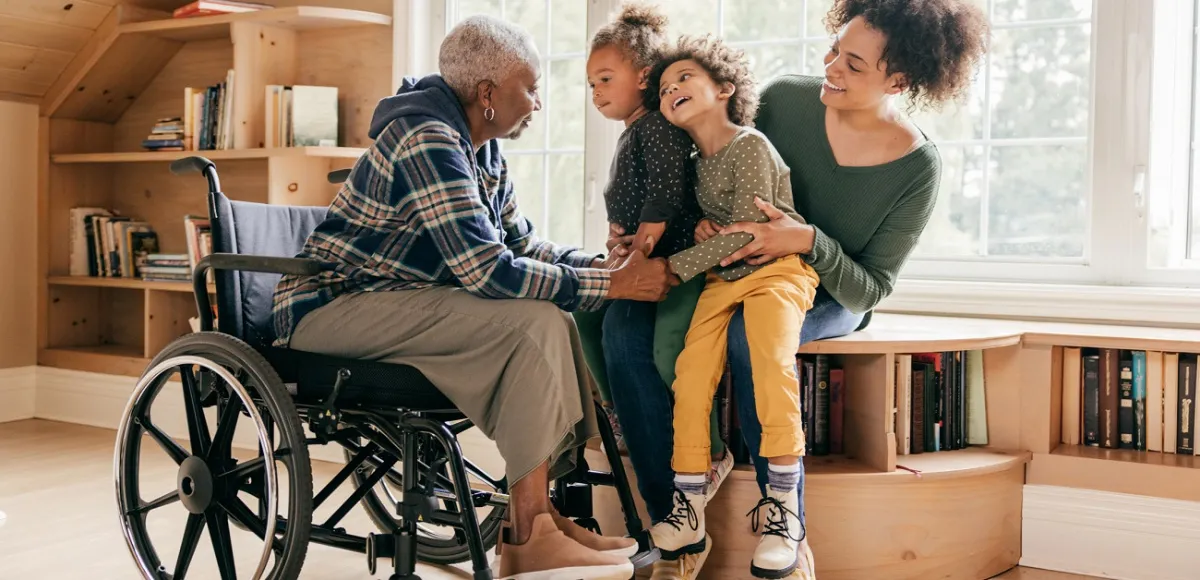3 Standards Multigenerational Housing Needs to Meet
December 7, 2022
A fourth of Americans are living in multigenerational households, but current housing stock needs to adapt to the population’s changing needs.
By: Nicole Slaughter Graham

Multigenerational housing has become commonplace, and many Americans even show a preference for it, experts said at the Urban Land Institute’s 2022 Fall Meeting in October. In fact, a quarter of Americans in 2021 lived in a multigenerational household, according to a study(link is external) from think tank Generations United. (A multigenerational household is defined as members of three or more generations living under one roof.) This means the market for multigenerational homes is a large and expanding source of business for real estate professionals.
The reasons vary for why people choose to live with multiple generations of their family, said Helen Foster, principal of real estate development firm Foster Strategy. Economic factors and cultural background are main drivers, and the number of multigenerational households is rising with uncertainty in the economy. “As rent pressures continue to increase, we’ll see more of this type of living situation,” Foster said.
Conceptually, communities could be restructured to foster multigenerational living as an answer to the home affordability crisis, said Daniel Parolek, author of Missing Middle Housing: Thinking Big and Building Small to Respond to Today’s Housing Crisis. However, he added, multigenerational housing needs to meet three standards in order to truly meet the needs of the population: accessibility, adaptability and affordability.
Standard One: Supporting Accessibility
Supporting multigenerational infrastructure means creating communities “where ages 8 through 80 can thrive,” said Michael Spotts, a research fellow at ULI’s Terwilliger Center for Housing. Accessory dwelling units, senior living spaces and adaptable single-family homes need to be available in order for a multigenerational community to work, said Rodney Harrell, vice president of family, home and community at AARP. Right now, the missing link is a focus on the elders’ needs. “By 2034, for the first time in U.S. history, we’ll have more people over 65 than under 18,” Harrell said. “What that means is that every community across the country will have people of all ages, and we haven’t had to wrestle with that before.”
Up until this point, community planners and developers have focused on meeting the needs of younger families without much thought regarding an aging population. This, says Parolek, is where master planned communities need to change. Part of that change requires bringing back housing typologies like duplexes, accessory dwellings and cottage courts.
But accessibility isn’t just about the types of housing available. Mobility is another important factor, said Spotts. Communities need to take into account how various age groups get around. “Some people will need to drive; some will want walkability,” he said. “We must build to suit both.”
Developers also need to think about how transportation affects the people who live in these communities. Spotts used the example of his own neighborhood, which he said is very “automobile-centric.” He said he doesn’t necessarily feel like his child is safe out riding a bike or crossing the street because of traffic. Fully functional multigenerational communities must include public transportation to consolidate traffic, but it shouldn’t be overcomplicated. “Buses work,” Spotts said. “They are adaptable and accessible.”
Location matters as well when planning out multigenerational communities. How close a community is to a downtown core will change the housing typology, Parolek said. “One size does not fit all. Location and context matter. Is public transit or Uber accessible? Parking might drive design. The closer you get to a downtown core, the smaller the space. Is mixed-use necessary?” Demographics, socioeconomics and location should all drive the specifics when designing a community catered to multigenerational living.
Standard Two: More Adaptable Spaces
Multigenerational communities must adapt over time as residents change. Kids grow up and move out. Some of them return home. Older generations pass on. Housing structures need to adapt to meet the need. Parolek used an example of a more versatile single-family home: “The main dwelling houses the core family unit. Then, there’s a wing for the grandparents and a third unit over the garage for boomerang kids or to rent out. The space includes a shared courtyard. So, in this single space, there are three distinct units that function as one unit or close off for privacy.”
Likewise, Parolek said there’s much value in a community that utilizes multiple adaptable housing typologies together. Cottage courts provide each generation with an individual cottage and shared community space, usually a courtyard or patio. Duplexes provide proximity without limiting privacy. Live-work spaces improve accessibility and proximity.
Adaptability isn’t reserved for living spaces, though. Neighborhood design and accessibility to grocery stores, offices and shopping is important, too. One of the big questions that remains in creating a truly working multigenerational community is how office, retail and warehouse spaces can become adaptable to accommodate shifting needs as the community ages.
Standard Three: Addressing Affordability
Multigenerational communities need child care workers, home health aides, housekeepers and grocery store workers to meet the needs of households. But these are lower-paying jobs that often can’t fully support workers. Spotts said recent ULI research(link is external) found that child care providers and home health aides “couldn’t afford to rent a one-bedroom apartment on the median wage anywhere in the country.”
Seniors find themselves facing affordability issues as well, Harrell said, adding that “as of 2019, 10 million adults ages 65 and older were housing cost–burdened.” Communities need to bring back the missing housing types, but it won’t be enough, Parolek said, adding that “zoning barriers [are] the biggest thing that needs to change to make missing typologies a possibility.”Builders and developers need incentives to construct affordable units that works for them and for the end user. Technology needs to expand outside the home and into the community itself, and infrastructure needs to be built in a way that allows for adaptation over time—which reduces costs, the experts said. A concerted, multi-solution approach is necessary to make affordability a reality and, thus, multigenerational living a viable option.


